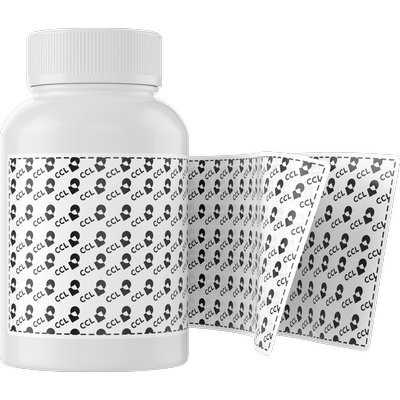What are Multi-Panel Labels and Their Benefits
Multi-panel labels, also known as extended content labels, are becoming increasingly common in the pharmaceutical industry. These labels consist of multiple panels that can be folded out to reveal additional information about the product, such as dosage instructions, contraindications, and potential side effects. The use of multi-panel labels for pharmaceuticals is driven by a need to provide consumers with comprehensive information while also ensuring that packaging remains compact and easy to transport.

Benefits of Pharmaceutical Multi-Panel Labels
One of the main benefits of multi-panel labels for pharmaceuticals is that they can provide consumers with a greater level of detail about the medication. This is especially important for prescription drugs, where consumers may need to know about potential side effects, interactions with other medications, and proper dosage instructions. Multi-panel labels can also include additional information, such as clinical trial data, that may be important for consumers who are considering whether to take the medication.
Another advantage of multi-panel labels for pharmaceuticals is that they can help to reduce the risk of medication errors. By including detailed dosage instructions and other important information, these labels can help to ensure that consumers take the medication as prescribed and avoid accidental overdoses or other errors. This is especially important for medications that have complex dosing regimens or that require careful monitoring.
Despite these benefits, there are some challenges associated with using multi-panel labels for pharmaceuticals. One of the main challenges is that these labels can be more difficult to read and understand than traditional labels. This is especially true for consumers who may have limited literacy skills or who are visually impaired. To address this challenge, pharmaceutical companies may need to consider using larger font sizes, clearer graphics, and other design features that make the information easier to understand.
Another potential challenge associated with multi-panel labels for pharmaceuticals is that they may be more expensive to produce than traditional labels. This is because these labels require additional materials and printing processes, which can add to the cost of production. However, the benefits of providing consumers with comprehensive information may outweigh the additional costs associated with multi-panel labels.
In conclusion, multi-panel labels are becoming an increasingly popular solution for providing consumers with comprehensive information about pharmaceuticals. While there are some challenges associated with these labels, the benefits of providing consumers with detailed information about their medications can help to improve safety, reduce medication errors, and promote better health outcomes.